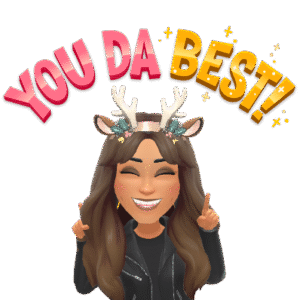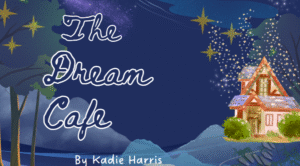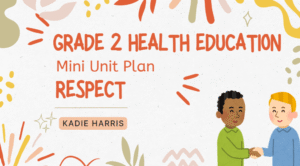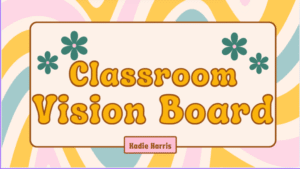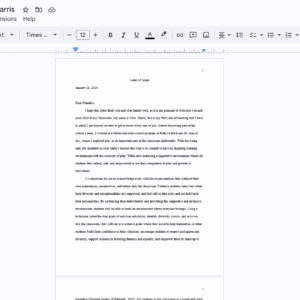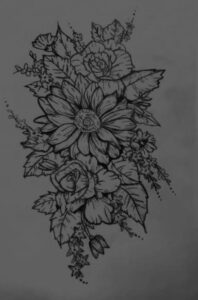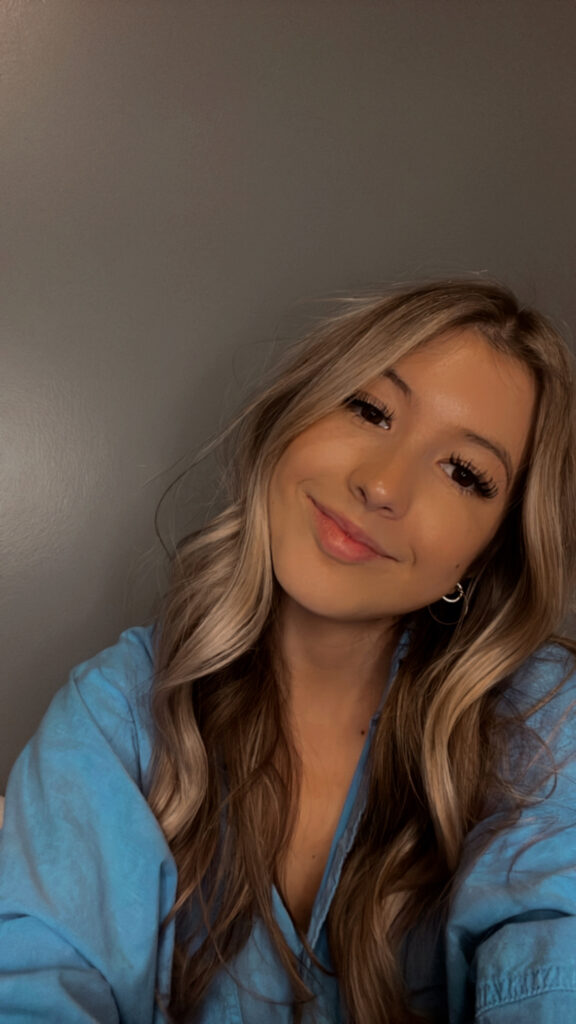As EDTC 300 comes to an end, I’ve been reflecting not only on what I’ve learned but on how we’ve all helped each other along the way. When I first heard that part of this course was about “contributing to the learning of others,” I’ll admit, I felt unsure. I’m still building my confidence with technology—how could I possibly help others?
But this class showed me that learning is a shared experience. You don’t have to be an expert to make an impact. Sometimes, asking questions, encouraging others, or sharing a helpful tool can make all the difference. And over the past few months, I’ve tried to do just that—whether it was through blog comments, or our Discord class communication platform. Here’s how I contributed to the learning of others:
Supporting Classmates Through Blog Comments
Through this semester, I’ve made it a habit to regularly read and comment on my classmates learning projects and assigned blog prompts. I aimed to offer encouragement, relatable feedback, and practical resources when possible. Additionally, as it was assigned to comment to 3-5 blog posts per week, I believed it was important for me to comment on at least 10 if possible. It was important for me to interact with as many people as possible. To see different points of views, to see where others were at in their learning projects, and to get to know other peers in my class.
Here are a few examples:
On Kyler Flahr’s blog about learning how to cook different culture dishes, I shared a a possible dish idea for his next week’s Indian dish on butter chicken or chana masala as I heard they were both super popular flavourful dishes.
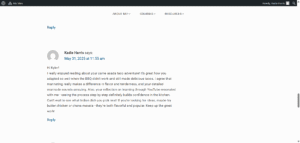
On Payton Pugh’s blog post learning how to crochet, I shared my experience and love of crocheting. I shared a helpful resource I used for beginners I found on Tiktok by a lady creator “Ladaknotts”.

On Shaunna Dunn’s blog post on learning how to create digital images, I shared my connection on how frustrating learning something new online can be.

Supporting Through Discord
Our class Discord server was another space where I tried to be helpful. I may have not had all the answers, but I always happy to share my experiences or cheer people on.
Ways I contributed on Discord:
- Answered classmates questions when I could on tech, evening providing videos with my answer:
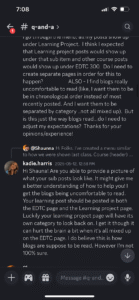
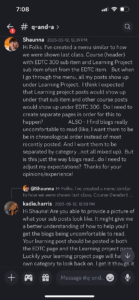


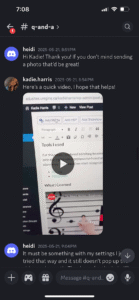
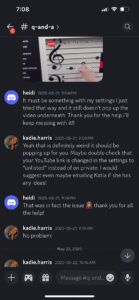
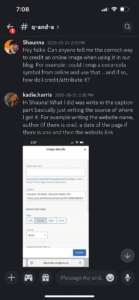
- Answered simple questions:
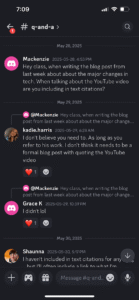
- And, additional resources:
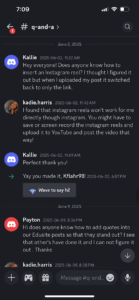
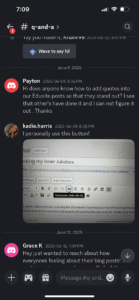

Final Thoughts
Looking back, I’ve realized that contributing to others’ learning doesn’t mean having all the answers–it means showing up, sharing what you can, and building a space where people feel supported. I’m proud of the little ways I was able to do that this semester, and I’m so grateful for the way others contributed to my learning too.
EDTC 300 reminded me that learning communities, both online and offline, are built one small interaction at a time–and those interactions matter.
Thank you to everyone in this course, including my professor Katia, for the encouragement, resources, and conversations along the way. I’ve learned so much from all of you, and I hope I was able to give a little of that back.
